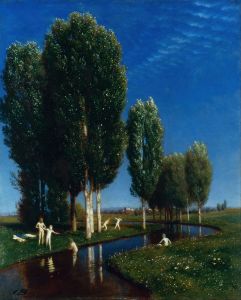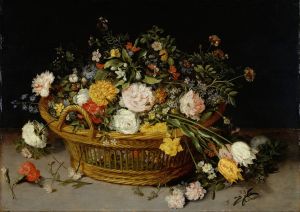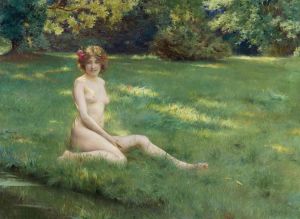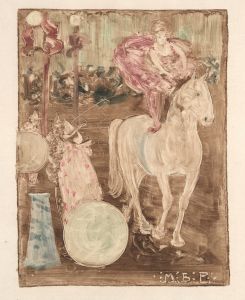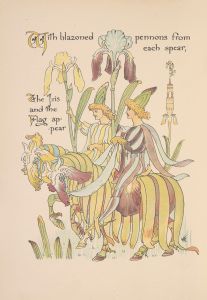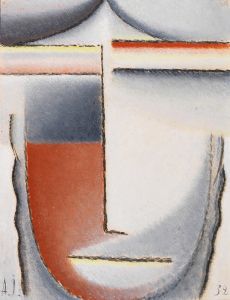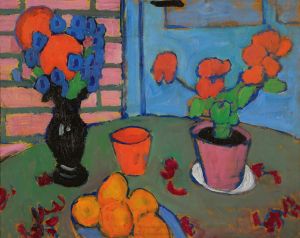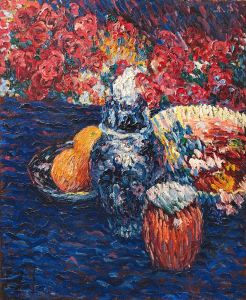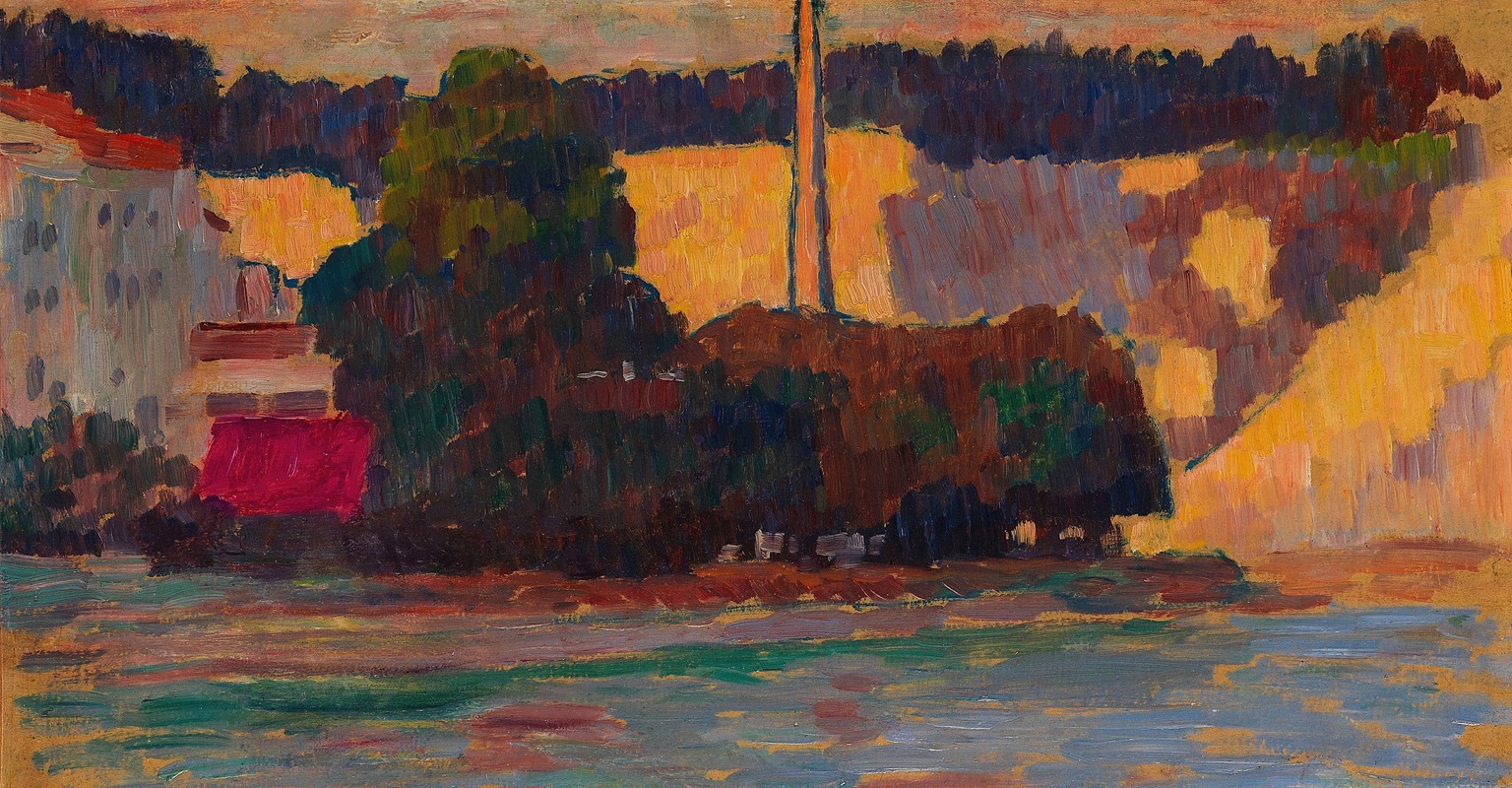
Wasserburg
A hand-painted replica of Alexej von Jawlensky’s masterpiece Wasserburg, meticulously crafted by professional artists to capture the true essence of the original. Each piece is created with museum-quality canvas and rare mineral pigments, carefully painted by experienced artists with delicate brushstrokes and rich, layered colors to perfectly recreate the texture of the original artwork. Unlike machine-printed reproductions, this hand-painted version brings the painting to life, infused with the artist’s emotions and skill in every stroke. Whether for personal collection or home decoration, it instantly elevates the artistic atmosphere of any space.
Alexej von Jawlensky was a Russian expressionist painter, known for his vivid use of color and bold forms. He was a key figure in the development of expressionism and was associated with the Blue Rider group, which included artists like Wassily Kandinsky and Franz Marc. Jawlensky's work is characterized by its emotional intensity and vibrant palette, often focusing on portraits and still lifes.
"Wasserburg" is one of Jawlensky's notable works, painted during a period when he was deeply engaged with the expressionist movement. The painting reflects his interest in capturing the essence of his subjects through color and form rather than detailed representation. Jawlensky's style during this period was influenced by his interactions with other avant-garde artists and his exposure to various art movements, including Fauvism and Post-Impressionism.
The painting "Wasserburg" is a landscape that showcases Jawlensky's distinctive approach to color and composition. The title refers to a town in Bavaria, Germany, which is known for its picturesque setting along the Inn River. Jawlensky's depiction of Wasserburg is not a literal representation but rather an interpretation that emphasizes the emotional and atmospheric qualities of the scene. The use of bold colors and simplified forms is typical of Jawlensky's work, aiming to evoke a sense of mood and feeling rather than a realistic portrayal.
Jawlensky's technique involved the use of broad, expressive brushstrokes and a vibrant color palette. In "Wasserburg," these elements come together to create a dynamic and lively composition. The painting captures the essence of the landscape through its use of color contrasts and rhythmic patterns, inviting viewers to experience the scene on an emotional level.
Throughout his career, Jawlensky was interested in the spiritual and emotional potential of art. He believed that colors and forms could convey deep feelings and inner truths. This philosophy is evident in "Wasserburg," where the interplay of colors and shapes suggests a harmonious and contemplative atmosphere. The painting reflects Jawlensky's belief in the transformative power of art and its ability to communicate beyond the visible world.
"Wasserburg" is part of Jawlensky's broader body of work that explores the relationship between color, form, and emotion. His contributions to the expressionist movement have been recognized for their impact on modern art, influencing subsequent generations of artists. Jawlensky's work continues to be celebrated for its innovative use of color and its ability to convey profound emotional experiences.
Today, Alexej von Jawlensky's paintings, including "Wasserburg," are held in various public and private collections around the world. They are appreciated for their bold expression and their role in the development of modern art. Jawlensky's legacy as a pioneering expressionist artist endures, with his works continuing to inspire and captivate audiences with their vibrant energy and emotional depth.





